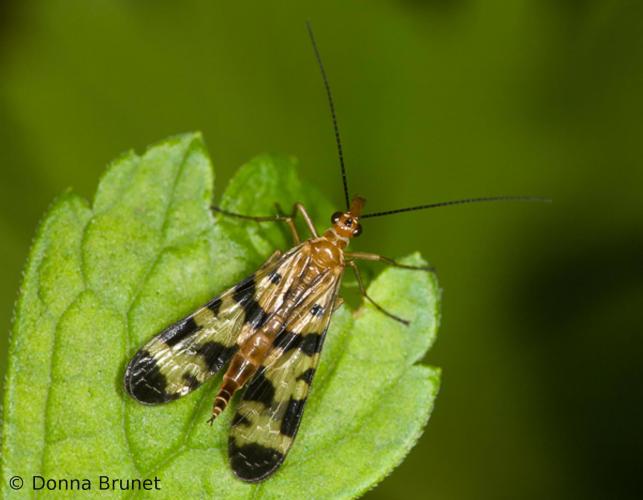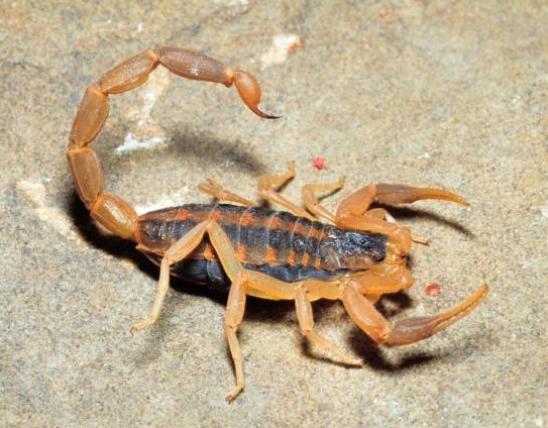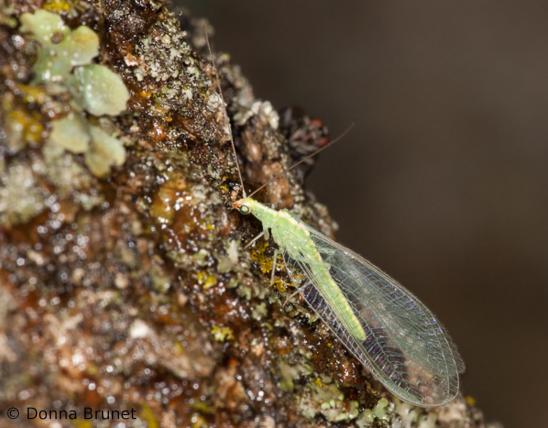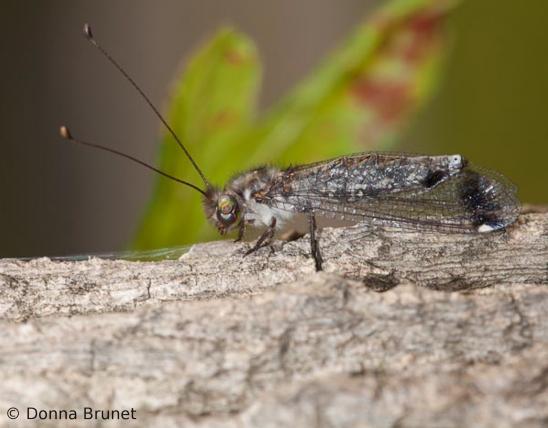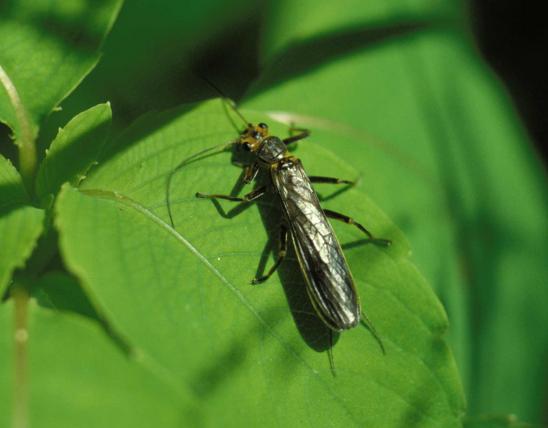
Scorpionflies look something like long-faced wasps. At rest, wings are usually held swept back in a V position and commonly are golden, clear, or light-colored with a black-banded or black-spotted pattern. Body color is commonly rusty or yellowish-brown. The male’s abdomen tip resembles the stinger of a scorpion. This scary-looking, bulbous, upcurled “tail” is completely harmless and is used only as a clasper in mating. The female’s abdomen tip tapers to a point and has 2 small appendages (cerci).
Larvae resemble caterpillars, with a hardened head, 3 pairs of legs on the thorax segments, and 8 pairs of short, leglike prolegs on the first 8 pairs of abdominal segments.
Similar insect groups: Neuropterans (net-winged insects: lacewings, alderflies, mantidflies, antlions, owlflies) don’t have the long face, and their wing venation usually includes a multitude of costal veins (along leading edge). Dipterans (true flies: robber flies, crane flies, house flies, and so on), have only one pair of wings. Hymenopterans (ants, bees, wasps, ichneumons, and so on) don’t have the long face, and their hindwings are usually smaller than forewings.
Body length: ½ to 1 inch (varies with species; does not include wings or other appendages).
Statewide.
Habitat and Conservation
Scorpionflies are associated with vegetation: old fields, low shrubs and groundcovers in woods, and edges of forests, often in proximity to water or wet areas. Like all flying insects, they can wing to all sorts of places.
Food
Adults and larvae are scavengers, feeding mostly on dead or dying insects. Adults sometimes also eat nectar from flowers or juices from rotting fruits.
Status
Scorpionflies are not pests to human interests, they are incapable of stinging, and they do not bite. In North America, there are about 60 species in the common scorpionfly family, but scientists are revising their groupings of this oddball group of insects. The order Mecoptera includes common scorpionflies, hangingflies, snow scorpionflies, and forcepflies (also called earwigflies); there’s a good chance you’ve never heard of any of these fascinating insect groups!
Life Cycle
Males offer food to females; this could be a dead insect or a tasty goo glob secreted from his salivary glands. Attractive odors (pheromones) waft from his bulbous hind end. While the female feeds on his gift, he mates with her, having clasped her hind end with clawlike appendages on his “tail” while other hooks on his body grasp her forewings. Females lay eggs in the soil, where the larvae live, eat, molt, rest, and finally pupate. Most species emerge as adults in late summer, while others overwinter as pupae and emerge in spring.
Human Connections
Scorpionflies have little economic impact to human interests; they don’t harm us or our crops or other things we care about. But they deserve a special kind of curiosity and respect for their fascinating body forms and their even more fascinating behaviors.
Ecosystem Connections
It seems likely that the distinctive look of scorpionflies — their wasplike black, yellow, and orange color pattern, plus the scary scorpion-like “tail” of the males — may be an example of Batesian mimicry, in which a truly defenseless animal possesses the same “warning” markings of creatures with venom or toxins. (Would you pick up a scorpionfly with bare fingers, if you didn’t already know it was harmless?)
